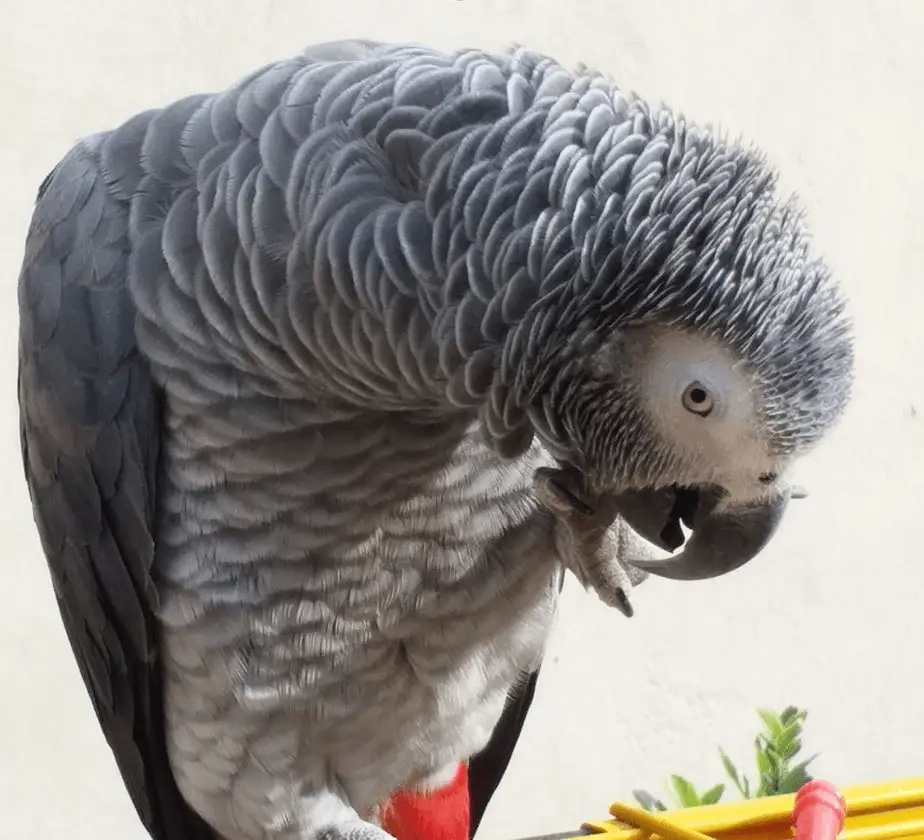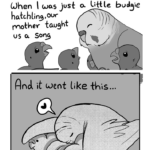
What is Psittacosis: There are a few illnesses that frighten people more than others when their name is spoken and psittacosis is, unfortunately, one of them. Also called parrot fever or avian chlamydiosis, psittacosis is a zoonotic disease that is found in many types of pet birds, including macaws and parakeets, and is easily transmitted.
Ornithosis, also called avian chlamydia, is chlamydia, that is, an infection due to a bacterium of the Chlamydiaceae family. One of the varieties of ornithosis is psittacosis. These are potentially serious zoonoses, widespread throughout the world.
What is psittacosis?
Psittacosis is a disease that affects more than 400 species of birds and some mammals. It is caused by the bacteria Chlamydophila psittaci, Chlamydophila avium, or Chlamydophila gallinacea (but other bacteria are thought to be responsible for this disease as well) and is spread from bird to bird or from bird to some mammals (including the ‘man) by infected birds. C. psittaci is the bacterium commonly seen in house psittacids such as parrots and is most commonly diagnosed.
Name
The term “psittacosis” was created to distinguish cases affecting or being contracted by Psittacidae, the “ornithosis” stricto sensu, from cases affecting or being contracted by other birds, such as domestic birds or waterfowl.
Risks to humans
Poultry professions (breeders, transporters or sellers of birds, workers in poultry slaughterhouses, bird shops, veterinarians, etc.) are the most exposed, through contact with droppings, even dehydrated, dust, contaminated aerosols.
This may include sporadic cases or endemic presence; incubation is from 5 to 19 days. The risks include an often mild disease (fever, intense headache, myalgia, and dry cough), with rare aggravated forms (severe or even fatal atypical pneumonitis), and sometimes non-respiratory forms: cardiac, neurological, hepatic, renal if no treatment is prescribed.
Legislation
It is a reportable animal disease in many countries; that is to say, its detection or suspicion must be brought immediately to the attention of the veterinary authority, in accordance with national regulations. In Europe, a European directive3 in 1999, it was placed on the list of zoonoses and zoonotic agents to be monitored according to the epidemiological situation, in accordance with specific surveillance procedures.
This disease is recognized as an occupational disease.
How do birds get psittacosis?
A bird does not need to be in contact with another bird that has been infected with any of the types of bacteria that cause psittacosis to get it, but it is an easy way for it. get. They can also come into contact with a person or object that has been in contact with an infected bird. Fomites in food and water bowls, airborne particles, feathers, droppings, and other objects that have come into contact with a bird with psittacosis can all infect healthy birds… Being in the same poorly ventilated room as an infected bird can also lead to it.
What are the symptoms of psittacosis in birds?
In birds, this causes a variety of symptoms, but it can also go unnoticed and remain dormant inside a bird. Birds infected with psittacosis are asymptomatic (show no symptoms) until stressed, causing swollen and swollen eyes (conjunctivitis), lethargy, anorexia, weight loss, fluffy feathers, nasal discharge, and an enlarged liver. It can also cause diarrhea and respiratory problems in some species of birds. Birds severely infected by exposure to the bacteria (which come in contact with an infected bird or item) will show symptoms after about three days. Carriers of the bacteria can get sick at any time.
What are the symptoms of psittacosis in mammals?
this usually causes reproductive problems, such as miscarriages and inflamed placentas, as well as breathing problems such as pneumonia, coughing, and increased respiratory rate. It has also been reported to cause eye problems similar to those seen in birds, lameness, fever, and runny nose.
Psittacosis can be fatal in untreated animals with symptoms, but many are asymptomatic. A variety of symptoms can also indicate other types of illnesses. It is therefore difficult to diagnose by looking only at the symptoms.
Symptoms
These symptoms include fever, diarrhea, conjunctivitis, and respiratory involvement due to lung inflammation. But they are not always present and differ according to the strain responsible for the infection, the age of the affected bird, and its species.
How to diagnose psittacosis in your bird?
Because the symptoms of psittacosis can resemble a range of other illnesses in pet birds, special tests are needed to diagnose the presence of C. psittaci . Histology (examination of tissue under a microscope), detection of nucleic acids and antigens, various serological tests, and cultures may be recommended by an avian veterinarian to diagnose your psittacosis in your bird. Sometimes more than one test is needed.
The bacteria can be found in different places on your bird, including the stool, liver, lungs, kidneys, spleen, excretions from the eyes, choana, cloaca, and even the tissue covering the heart called the pericardium. Birds showing symptoms of psittacosis are easier to diagnose than those showing no signs of the disease. Sometimes several fecal samples need to be tested for the bacteria, especially in carrier birds without the severe disease.
Which bird species are frequently infected with psittacosis?
The most commonly infected species of pet birds are those of the Psittacidae (often called parrots) family. These include macaws, parakeets, cockatoos, Amazon parrots, cockatoos, lorises, African grays, lovebirds, and conures. Domestic pigeons are also often affected by psittacosis, as are domestic ducks. Hundreds of other bird species are also susceptible to this disease, including wild birds.
Is there a treatment for psittacosis?
Fortunately, there is a treatment for psittacosis. About 50% of birds would die from this infection if they were not treated, but antibiotics are usually successful in treating it. Since birds cannot safely take all of the same types of antibiotics as other animals, they have usually prescribed doxycycline, a tetracycline-class antibiotic, for 45 days to treat the condition. If your bird does not have C. psittaci, another type of antibiotic from the sulfonamide class may also be effective, but this class of drugs has no effect on the type of bacteria most commonly diagnosed as causing the disease.
Treatments
- Antibiotic therapy, especially tetracycline.
- Mortality is reduced to less than 5% under treatment.
How to prevent psittacosis in your bird?
Certain types of disinfectants can kill bacteria that cause psittacosis. Cleanliness is therefore essential to prevent this disease. If you are attending a bird show, be sure to wash your hands thoroughly before handling the birds and before handling your own bird. Even items for sale at the bird show, such as food dishes, cages, and toys, can harbor contaminated items from infected birds and should be washed before they are brought home.
Wild birds can also be carriers of psittacosis. Baby birds that fall from the nest, dead birds, and injured birds are usually handled by people and can carry psittacosis. If you handle wild birds (especially seabirds), be sure to wash your hands before handling your pet bird.
If you are considering adopting or purchasing a new pet bird, be sure to quarantine it before introducing it to another pet bird. This will give you time to monitor them for any signs of psittacosis. Be sure to adhere to hygiene rules during this quarantine or wear disposable gloves and a mask, especially if the bird’s source is skeptical.
If you have more than one bird and one is diagnosed with psittacosis, you should isolate it from the others to minimize the risk of the infection spreading. Good ventilation, clean environments, and hand washing are all critical to spreading psittacosis transmission in the home.




















